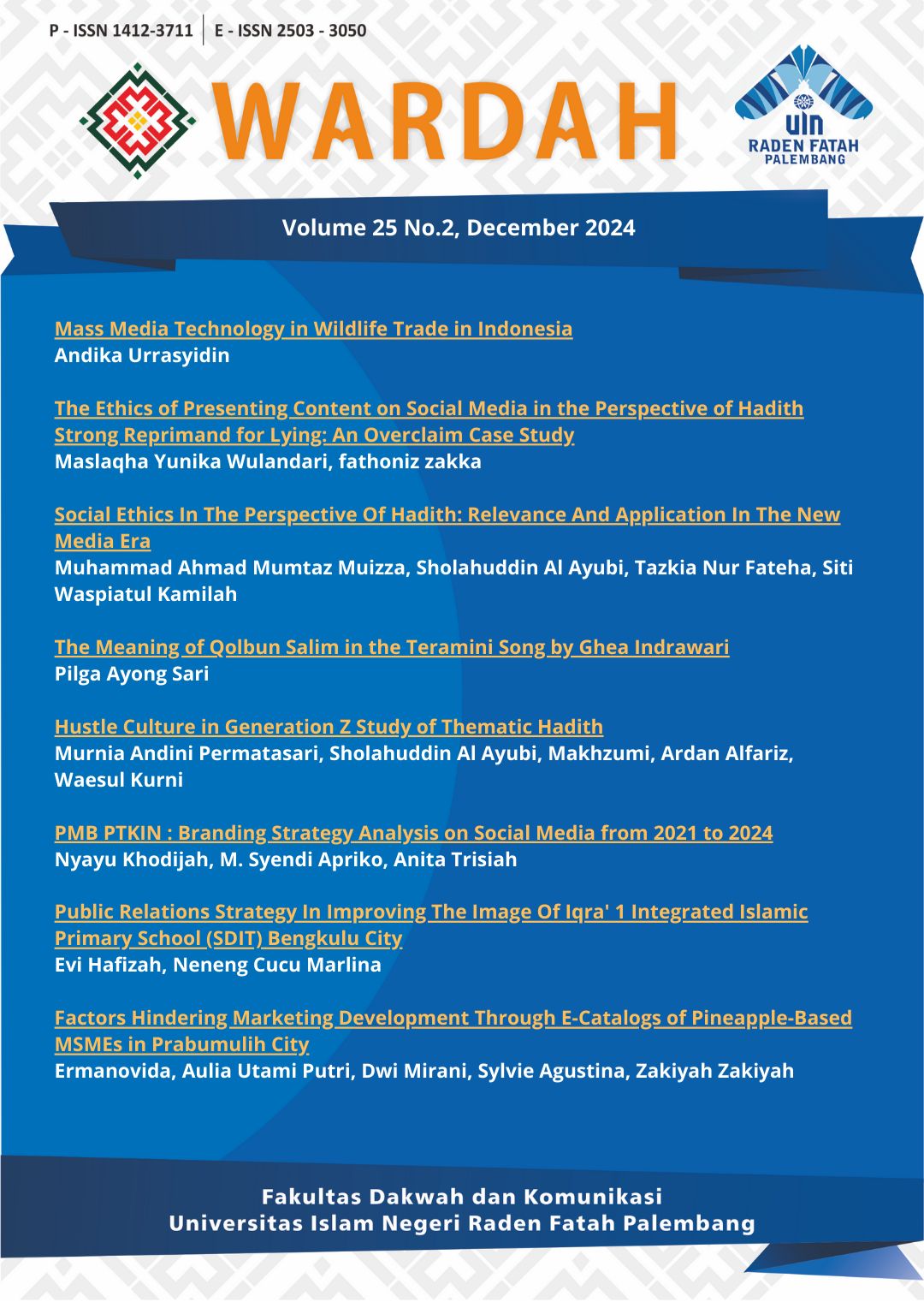MASS MEDIA TECHNOLOGY IN WILDLIFE TRADE IN INDONESIA
Isi Artikel Utama
Abstrak
This study examines the role of technology, particularly social media, in facilitating illegal wildlife trade in Indonesia, as well as efforts to combat it. Online wildlife trade has grown along with technological advances, which provide criminals with wider access and anonymity that facilitate illegal transactions. Social media platforms and e-commerce have become the main channels for this trade, with perpetrators taking advantage of anonymity features and effective marketing through paid advertising and visual content. To address this problem, several mitigation efforts that can be made include increasing digital literacy for the community, collaborating with social media and e-commerce platforms to develop reporting mechanisms, developing artificial intelligence-based detection technology, and strengthening law enforcement. This study highlights the importance of collaboration between various parties, as well as the use of technology to detect and prevent wildlife trade more effectively.
Rincian Artikel
- Penulis menyimpan hak cipta dan memberikan jurnal hak penerbitan pertama naskah secara simultan dengan lisensi di bawah Creative Commons Attribution License yang mengizinkan orang lain untuk berbagi pekerjaan dengan sebuah pernyataan kepenulisan pekerjaan dan penerbitan awal di jurnal ini.
- Penulis bisa memasukkan ke dalam penyusunan kontraktual tambahan terpisah untuk distribusi non ekslusif versi kaya terbitan jurnal (contoh: mempostingnya ke repositori institusional atau menerbitkannya dalam sebuah buku), dengan pengakuan penerbitan awalnya di jurnal ini.
- Penulis diizinkan dan didorong untuk mem-posting karya mereka online (contoh: di repositori institusional atau di website mereka) sebelum dan selama proses penyerahan, karena dapat mengarahkan ke pertukaran produktif, seperti halnya sitiran yang lebih awal dan lebih hebat dari karya yang diterbitkan. (Lihat Efek Akses Terbuka).
Cara Mengutip
Referensi
Central Bureau of Statistics (BPS). (nd). Wildlife hunting data 2018-2022. Central Bureau of Statistics.
Liew, JH, & team. (2021). International socioeconomic inequality drives trade patterns in the global wildlife market. International Socioeconomic Inequality Research.
International Fund for Animal Welfare (IFAW). (2004). The growth of illegal wildlife trade online. International Fund for Animal Welfare.
Wildlife Conservation Society (WCS) Indonesia Program & KLHK. (2022). Online wildlife trade study in Indonesia (2021-2022). Wildlife Conservation Society.
Government Regulation No. 7 of 1999 concerning the preservation of plant and animal species. (1999). State Gazette of the Republic of Indonesia No. 7 of 1999. State Secretariat of the Republic of Indonesia.
CITES (Convention on International Trade in Endangered Species of Wild Fauna and Flora). (1973). CITES: Convention on International Trade in Endangered Species of Wild Fauna and Flora. CITES Secretariat.
McQuail, D. (2010). Mass communication theory (6th ed.). Sage Publications.

